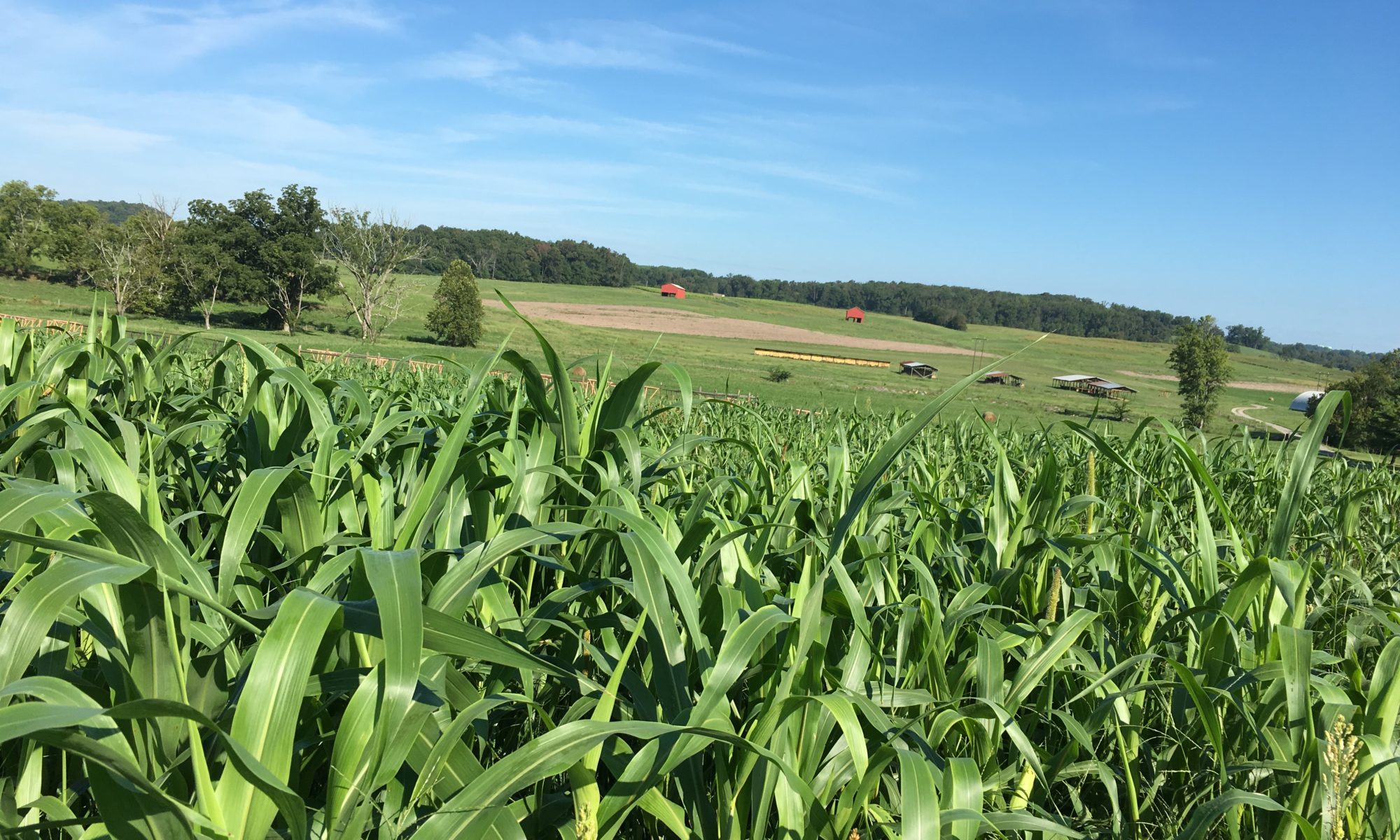

Dr. Gary Bates
Director and Professor
UT Beef & Forage Center
P: 865-974-7324
Almost everyone agrees that tall fescue is the foundation of the beef cattle industry in Tennessee. Fescue is very productive during the spring and fall, but high temperatures and limited rainfall during the summer result in poor production. To improve forage production during this period of the year, plant a few acres of a summer annual grass such as pearl millet, crabgrass or sorghum x sudangrass hybrids. These forages have the potential to provide a high yielding, high quality pasture or hay field if they are utilized correctly.
Potential uses for summer annual forages
A. Creep graze pasture for calves – putting up a creep gate and allowing calves access to a limited acreage is a good alternative to creep feeding with grain. The high quality of the available forage can add extra weight on the calves.
B. Supplemental pasture for beef cows – a high quality forage can help the cows rebreed faster, milk better. Summer annual grasses can provide forage production when poor pasture growth might otherwise require hay feeding.
C. Hay production – if your hay supplies have not been restored, these grasses can help restock the hay barn.
Steps for establishing summer annuals
(1) Planting method – These forages can be planted both conventionally and no-till. Conventional tillage ensures the reduction of competition from existing vegetation. For successful no-till planting, this vegetation must be killed chemically with a burn-down herbicide. Seed should be planted ½ to 1½ inches deep.
(2) Planting dates – Summer annuals can be planted from late spring through mid-summer. Sorghum X sudangrass hybrids are more tolerant of low temperatures than pearl millet and can be planted earlier in the year, when there is still a chance of a late spring frost. The recommended seeding date for sorghum X sudangrass hybrids are from April 20 to July 1. Pearl millet and crabgrass should be planted from May 1 to July 1.
(3) Seeding rates – Pearl millet should be planted at the rate of 10-15 lb/acre if drilled, or 20 lb/acre if broadcast. Sorghum X sudangrass hybrids should be planted at 30 lb/acre if drilled, or 45 lb/acre if broadcast. Crabgrass should be planted at 4-6 lb pure live seed/acre.
(4) Fertilization – Summer annuals should be fertilized with potash and phosphate and limed according to soil test. Often times these crops may follow a small grain crop which has been well fertilized. There is no way to know if the crop will be under- or overfertilized without a soil test. For the grasses, apply 30 to 60 lb N/acre at establishment. If moisture is adequate, 30 lb of N/acre can be applied to the grasses in mid-July.
Harvest
One of the key factors in using summer annual grasses is to efficiently harvest the forage before it gets too mature. These plants (except for crabgrass) grow 3 to 8 feet tall, so they can get ahead of the cattle quickly. Grazing should begin at approximately 15 to 18 inches, and stop at about 6 inches. If the plants are growing fast, cut hay when they are approximately 30 inches tall. For crabgrass, graze when the plants reach 12 inches. Cut for hay when the plants reach 15 inches. The quality of the plants drop quickly as they mature. Using a conditioner will help these plants dry faster, making a better hay.
Toxicities
Often times people hesitate to use these grasses because of the toxicities that can occur from them. There are two toxicities that can develop in these grasses. The first is nitrate poisoning, which occurs in sorghum x sudangrass hybrids, crabgrass and pearl millet. Nitrates can accumulate to toxic levels during a drought. Avoid grazing or cutting hay from these grasses during periods of water stress. If you suspect high nitrate levels, contact your local Extension office to have the forage tested.
The second toxicity that can occur is prussic acid poisoning. This occurs in sorghum x sudangrass hybrids, but not in pearl millet or crabgrass. Prussic acid will be found after a frost. Be careful when grazing this grass in the fall because of the potential of frost. Prussic acid degrades during drying, so there is no prussic acid toxicity in hay.
Summer forages are useful in a forage system because they produce of quality forage during the summer. These forages can be used across the state to provide nutrients either as grazing or as hay. Following the guidelines listed above will help you have success with summer annuals.